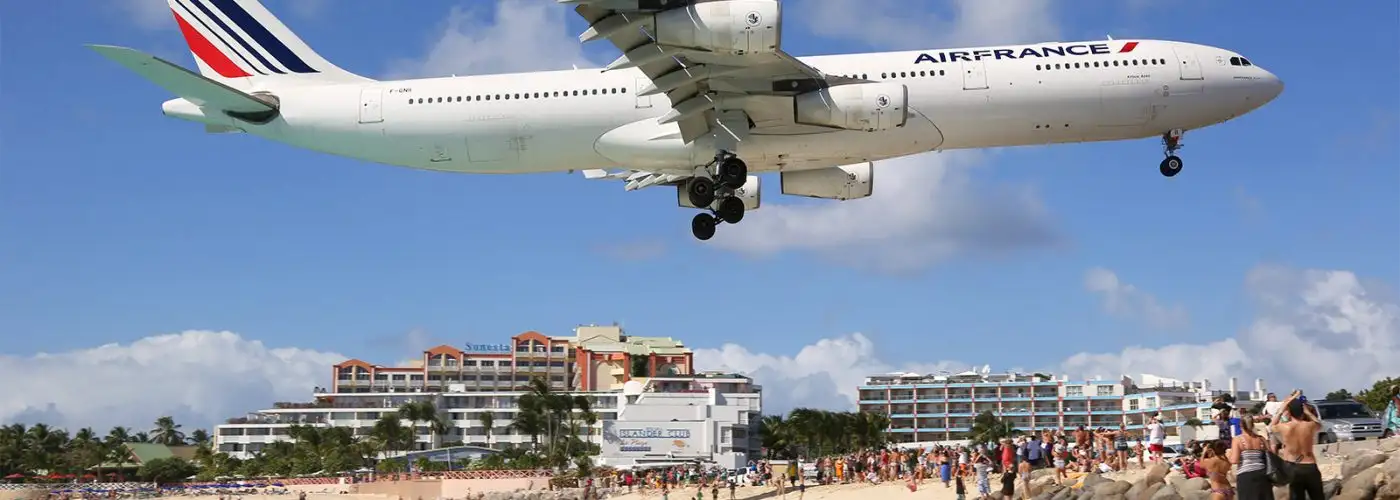Looking for a white-knuckle experience on your next flight? Make sure your itinerary includes one of these airports with challenging takeoffs or landings. While numerous regulations are in place to ensure commercial airports remain perfectly safe, uninitiated flyers may be in for an unexpected journey. From limited-visibility landings and super-short runways to inconveniently placed volcanoes, thrill seekers will want to get a front-row seat on these flights.
But rest assured: “There’s no such thing as a scary or dangerous airport. Each airport has its own idiosyncrasies,” emphasizes pilot Patrick Smith, author of the Ask the Pilot blog. So buckle your seatbelt, and prepare for an adrenaline-filled ride. We’ve asked a couple of pilots, along with SmarterTravel readers, for their insights and experiences with difficult takeoffs and landings. Be sure to add yours in the comments section below!
Editor’s note: This story was originally published in 2010. It has been updated and verified for accuracy.
Image Gallery
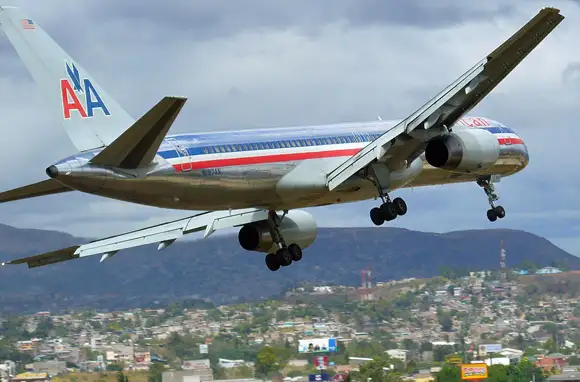
Toncontin International Airport, Tegucigalpa, Honduras
Getting through the mountains is only one hurdle to overcome for a safe landing in Tegucigalpa, Honduras. During descent, planes need to make a 45-degree bank to effectively reach the 7,000-foot runway located in a valley. Due to the surrounding mountainous terrain, passengers will experience a quick drop in altitude in order for the plane to line up with the runway. Frequent winds complicate matters, as pilots are forced to make several last-second adjustments.
Have you ever flown into Tegucigalpa or another airport that required a sharp turn or quick drop? Tell us about it below!

Toncontin International Airport, Tegucigalpa, Honduras
Getting through the mountains is only one hurdle to overcome for a safe landing in Tegucigalpa, Honduras. During descent, planes need to make a 45-degree bank to effectively reach the 7,000-foot runway located in a valley. Due to the surrounding mountainous terrain, passengers will experience a quick drop in altitude in order for the plane to line up with the runway. Frequent winds complicate matters, as pilots are forced to make several last-second adjustments.
Have you ever flown into Tegucigalpa or another airport that required a sharp turn or quick drop? Tell us about it below!
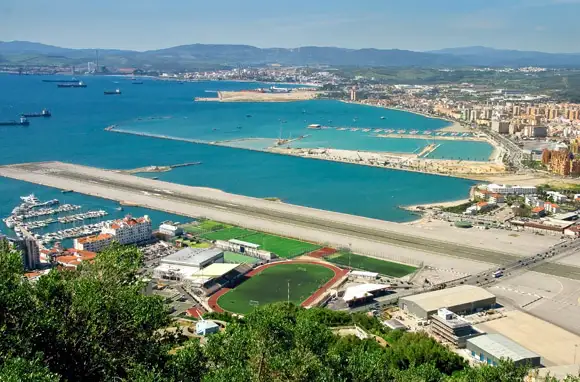
Gibraltar Airport, Gibraltar
As if having the Mediterranean Sea to the east and the Bay of Gibraltar to the west of the airport weren't enough to complicate a landing, the main road to Spain also intersects the runway. You may be thankful if your plane gets diverted to a nearby airport due to weather, though you'll still have to brave the runway when you walk over it to get from Spain to the British overseas territory. Because of this, traffic must be stopped when planes are using the airport, and pilots must take care when landing to quickly engage the brakes, as the 6,000-foot runway doesn't leave much room for error.
Have you ever flown into an airport that is extremely close to the city, or one that interrupts highway traffic? Share your experiences!
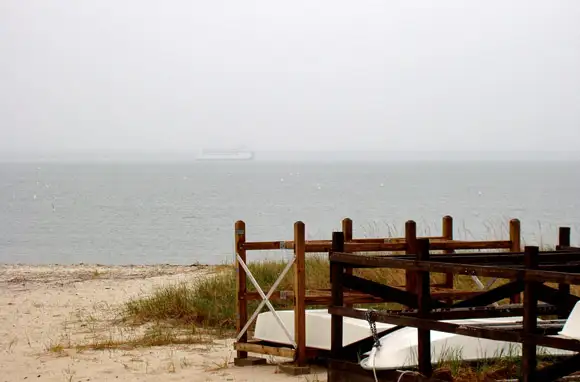
Nantucket Memorial Airport, Nantucket, Massachusetts
The U.S. Army Air Corps specifically chose Nantucket, or the Grey Lady, as a training base in World War II because of the frequent fog and low ceilings that make navigation a challenge, forcing pilots to rely solely on instruments to fly. "In a matter of minutes, fog can roll in and turn clear, blue skies gray," says pilot Andrew Sitarz (brother of co-author, Kate Sitarz). "Sometimes you can't see anything until the last second; you break out of the fog, and the plane is landing." According to Smith, "[Nantucket] has more low-visibility instrument approaches than the average airport." Nevertheless, both pilots cite parameters, such as minimum visibility and ceiling regulations, that prevent planes from landing in poor conditions.
Have you ever landed in the fog at Nantucket or another airport? Tell us about it by leaving a comment!
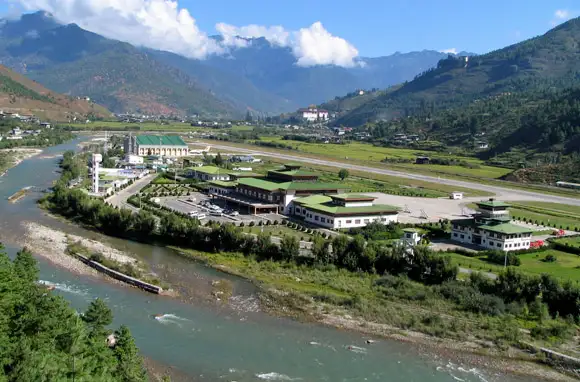
Paro International Airport, Paro, Bhutan
If you want to visit Bhutan, chances are you'll have to fly into Paro, the only international airport in the country. "Anywhere where there's mountainous terrain there's a challenge," says Captain Sitarz. And Paro is no exception. Soaring through 16,000-foot Himalayan Mountains with whipping winds gets your adrenaline pumping as you approach the 6,050-foot runway, located in a deep, tree-lined valley. According to the website of Drukair, the only airline serving Paro, "each flight is a mesmerizing aeronautical feat and offers an exciting descent into the kingdom." But fear not: Pilots are specially trained to fly into Bhutan, and accessing the airport is entirely dependent on good weather conditions.
Have you ever landed in a valley, or had to weave through mountains to get to the runway? Share your experiences!
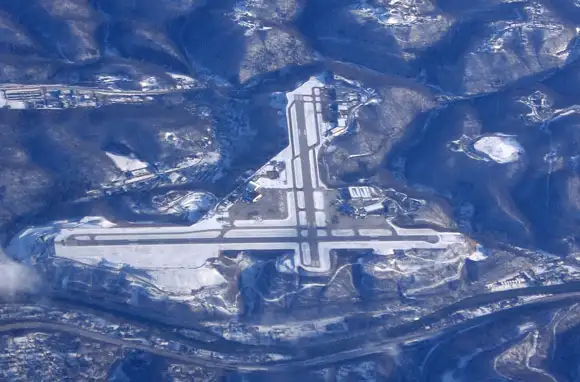
Yeager Airport, Charleston, West Virginia
Located on Coonskin Ridge in Charleston, West Virginia, Yeager Airport's cliff face, at an elevation of 982 feet, can be intimidating, especially when you only have 6,302 feet of runway (the closed secondary runway is a mere 4,750 feet). When we asked our Facebook followers about their scariest airport experiences, Chris Randall noted Yeager, saying, "It's a flattened mountaintop, so if they overshoot the runway there's nowhere to go but down." Of course, a takeoff or landing is the same whether you're on a mountaintop or on the ground, but for those flying into Yeager for the first time, it can be a nervous landing until you've come to a complete stop.
Have you ever taken off from a mountaintop? What other high-altitude airports make you grip the armrest? Leave a message in the comments section below!
RELATED: 5 Types of People to Avoid on Planes
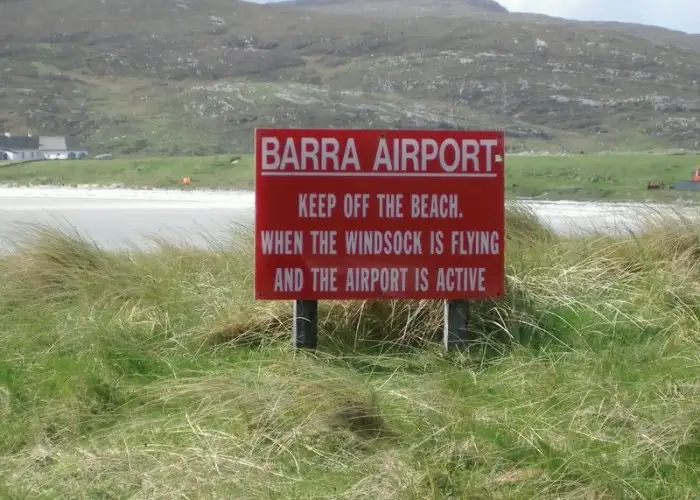
Barra Airport, Barra, Scotland
Touching down without a paved strip may seem like a crash landing for unsuspecting passengers, but in Barra, Scotland, it's a normal experience. When the airport isn't in service, the beach is a popular spot for locals to hunt for cockles, but when the wind sock is flying, you'll do well to observe from afar. On Flybe, the only airline that flies there, passengers can expect to arrive safely on one of the three runways (marked by concrete poles) formed when the tide goes out. As one of the only airports in the world where beach landings still occur, you shouldn't miss this unique experience.
Barra is the only commercial beach airport. What other one-of-a-kind airports have you experienced? Share your thoughts!
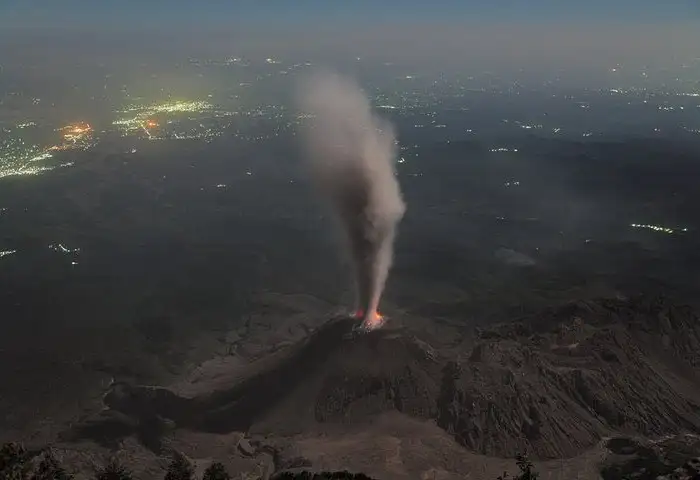
La Aurora International Airport, Guatemala City, Guatemala
Surrounding mountains, a high altitude, and a steep drop at the end of the runway make flying into La Aurora International Airport in Guatemala City a fun ride, even from a pilot's point of view. According to Smith, "Passengers find [landing here] startling because you weave your way through a series of volcanoes," including the active Pacaya Volcano that recently caused the airport to close, before flying low over the city and approaching a runway situated at the edge of a valley. But despite the unusual landing, Smith notes that based on weight and weather, the types of aircraft that can attempt a landing must be guaranteed to stop within a certain amount of time.
Have you ever been to an airport so close to volcanoes? Leave us a message!
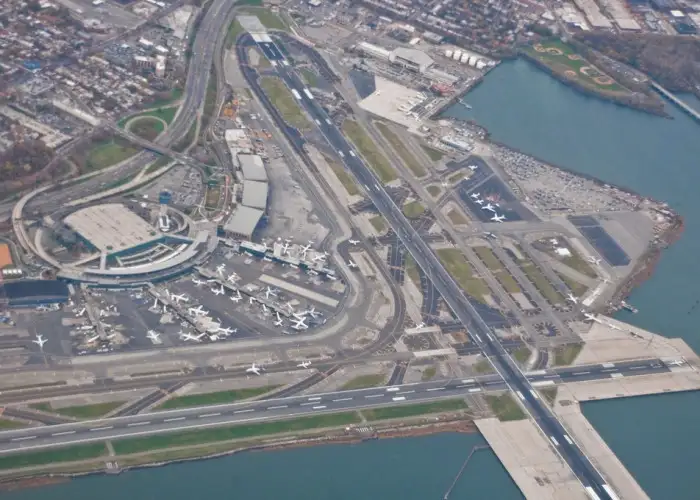
LaGuardia Airport, New York City, New York
The main, 7,000-foot runways at New York's LaGuardia Airport were extended back in 1967âover water. In case gliding over Flushing and Bowery bays isn't enough of a thrill, pilots have to avoid interfering with flights from two other extremely busy airports nearby: JFK and Newark. Plus, the airport is located a mere eight miles from Midtown Manhattan, sometimes creating the illusion that the plane is skimming rooftops. Smith cites LaGuardia's shared airspace, climbs, and twists and turns as reasons why it is a more challenging airport. "On one approach to runway 31, the plane makes a steep, continuous low-altitude turn around what was Shea Stadium, now Citi Field, from south to northwest; it's very low to the ground and a short final approach."
Have you ever had a harrowing experience taking off or landing at LaGuardia, or is there another airport you've flown into that comes eerily close to the water? Let us know!
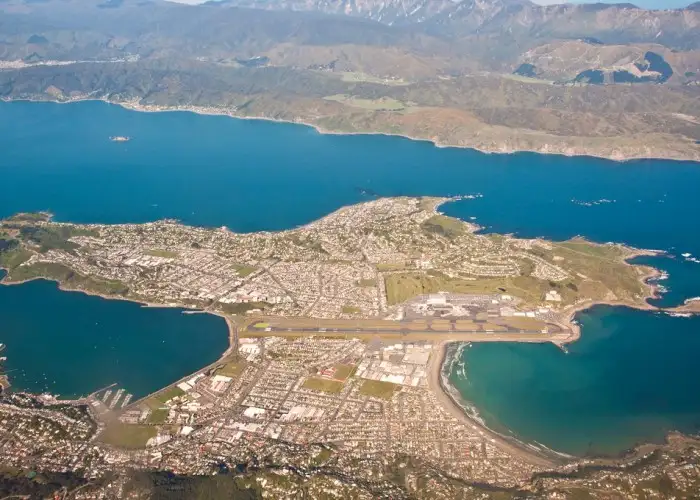
Wellington International Airport, Wellington, New Zealand
With a single, short, 6,351-foot runway that appears to begin and end in crystal blue waters, it's easy to see why flying into Wellington may make you uneasy. Plus, as SmarterTravel Twitter follower @trickericke says, "They don't call it 'windy Wellington' for nothing," noting the strong crosswinds that seem to attack landing planes. Plus, the northern approach descends between hills and over trolley lines. And judging by the airport's slogan, "Wild at Heart," you'd almost think the Kiwis consider landing there an extreme sport like zorbing.
What other airports have adrenaline-pumping crosswind landings? Leave us a message in the comments section below!
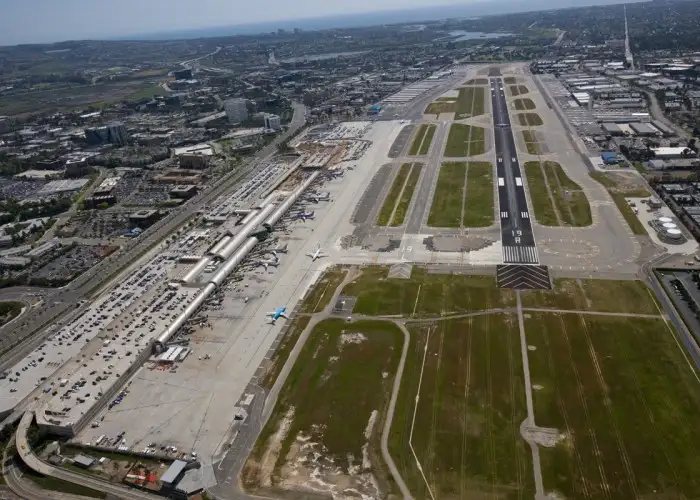
John Wayne Airport, Santa Ana, California
Strict noise reduction requirements may not seem scary at first, but if you're not expecting engine cutbacks during takeoff you might be spooked. According to Jenny Wedge, public relations manager at John Wayne Airport in Santa Ana, "Due to its close proximity to nearby communities, JWA has one of the most stringent aircraft access and noise monitoring programs in the United States, if not the world." Pilots begin their takeoffs at close to full power, then " target="_blank">incline quickly and steeply before reducing engine power. "It's like a space shuttle liftoff," says Facebook follower Elizabeth Conrad. Smith notes that passengers contact him about this airport all the time, some even claiming the pilots turn off the engines after take off. But although the procedure seems unusual, he says "there's nothing that the plane does that is not within its capabilities."
Each person has a personal definition of "scary." What airports make your heart accelerate? Share your thoughts by submitting a comment below!
More from SmarterTravel:
- 10 Worst Airports in America for Bad Weather
- 10 Ways to Speed Through Airport Security
- 10 Scams Every Traveler Should Know About
We hand-pick everything we recommend and select items through testing and reviews. Some products are sent to us free of charge with no incentive to offer a favorable review. We offer our unbiased opinions and do not accept compensation to review products. All items are in stock and prices are accurate at the time of publication. If you buy something through our links, we may earn a commission.
Related
Top Fares From
Today's Top Travel Deals
Brought to you by ShermansTravel
France: 8-Night Paris, Avignon & Nice...
Infinity Worldwide Vacations
 vacation
$2880+
vacation
$2880+
Poconos: 3 Nts in Garden of...
ResortsAndLodges.com
 hotel
$305+
hotel
$305+
7-Nt Canada & New England Cruise,...
Princess Cruises
 cruise
$839+
cruise
$839+
